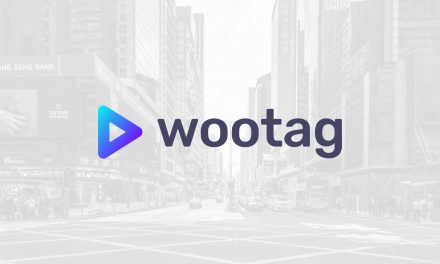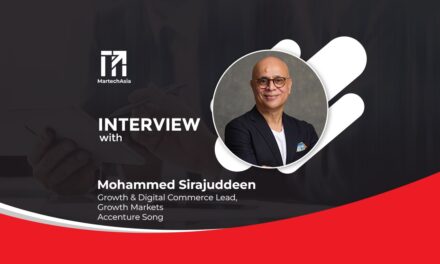In this interview, Ichiro T. Jinnai, the President of Hivestack Japan, offers his insights on the current challenges brands and publishers are facing in the region as well as the opportunities that lie ahead in programmatic DOOH as they look towards recovery.
Ichiro T. Jinnai, the newly appointed President of Hivestack Japan, a global, full stack, marketing technology company that helps marketers and publishers buy and sell digital out of home (DOOH) inventory through programmatic is widely regarded as the founder of programmatic DOOH in Japan.
In this interview with us, he offers his insights on the current challenges brands and publishers are facing in the region as well as the opportunities that lie ahead in programmatic DOOH as they look towards recovery.
Ichiro Jinnai is the former CEO of LIVE BOARD, Japan’s first impression based DOOH exchange, which was established as a joint venture company between NTT DOCOMO and Dentsu. Having spent almost three decades in various senior positions at Dentsu in Japan, China and Singapore, he has dedicated his entire career to the transformation of advertising.
How has the pandemic affected DOOH across the Asia Pacific? Do you agree that global ad spend has dipped and that OOH has been one of the hardest hit areas?
According to Dentsu, COVID-19 had a significant impact on the out of home (OOH) media sector, with global OOH ad spend declining by -16.9% compared to 2019, down by -18.9% in Japan alone. The digital out of home (DOOH) sector in Japan saw a decline of -32.5% in 2019, demonstrating the impact of the stay at home order. Despite these challenging times, many opportunities arose for advertisers to re-evaluate their strategies and explore new technologies such as programmatic DOOH, which offers agile and flexible buying; a valuable asset to brands and agencies as they cautiously resume OOH ad activations.
Has there been a channel move too – from social media to online streaming platforms?
As reported by Dentsu, social media use grew by 15.1% globally in 2020, while video and social media usage grew by 21.3% and 16.1% respectively in Japan. Because of this marketers had to shift their strategies from far-reaching, mass audience targeting to local-centric ones. With most stuck behind laptop and phone screens, audiences experienced screen fatigue and this has provided a crucial opportunity for DOOH – in particular programmatic DOOH. OOH has always been able to target and engage with audiences at a ‘’neighborhood’’ level, but the precision offered by programmatic DOOH became paramount as brands started looking to reach audiences at their most engaged – as they got away from their screens and ventured into the outside world.
What challenges is the DOOH sector facing? How are DOOH media owners coping with the market changes as media buyers and brands are cautious about spending?
In response to the pandemic, advertisers now demand greater flexibility, precision, and measurement to justify their spending. In this climate, they need to customise their messaging now more than ever, be selective with placements, and engage with their audience with relevant advertising at the right time, while respecting consumer privacy Crucially, buyers also need to know how their campaigns perform and understand the return on investment.
To meet these expectations, marketers have turned to programmatic DOOH for their DOOH campaigns. Programmatic DOOH is geared towards audience-centric buys, which leverage various anonymised data touchpoints to reach specific audience segments with contextual messages while they are on-the-go. The technology also allows for multi-level measurement, enabling media buyers to accurately assess campaign effectiveness, optimise and alter flighting and delivery in real time. Such precision has never been possible before in OOH and the benefits mean more control, greater agility and maximized returns on investment, putting programmatic DOOH in the leading position to address key industry challenges.
Is automation the solution in this space? Has the pandemic forced the sector to be more innovative?
Automation has made its way into the sector with the advent of programmatic DOOH. While the industry has always demonstrated its ability to innovate and stay relevant, even more so as a result of the pandemic, further education across the market is required for the medium to grow and develop as the benefits of programmatic DOOH go far beyond simple automation. The technology offers an array of advantages for both the buy and sell side; for brands, it offers data-driven targeting, campaign measurement, and real-time optimization, while for publishers, programmatic trading can increase the value of DOOH inventory, especially in an environment with finite supply and increasing demand for premium locations. The value of this is unparalleled and I look forward to continuing working with various industry partners to further innovate in this space.
How can programmatic DOOH offer brands the data-driven targeting, campaign measurement and real-time optimisation needed to navigate changing environments?
By its very nature, programmatic DOOH empowers brands to create agile campaigns targeted at the right set of customers while offering precise measurement and real-time optimisation. When navigating fast changing environments, the flexibility that the technology affords is unrivalled as it allows brands to increase or decrease ad spend, adjust campaign parameters, or even pause campaigns all together in response to external changes. Flexibility is a game changer in fluctuating market conditions, and buyers are increasingly aware of the value digital and data-driven technology combined with real-time capabilities are bringing to the out of home space.
Please tell us how can Japanese DOOH publishers grow their revenues by partnering with international brands seeking to target out of home audiences in Japan.
Japanese DOOH publishers can turn to programmatic DOOH to retain control over their inventory, generate net new revenue, and maximise sales performance. International brands are increasingly looking to partner with local publishers to run programmatic DOOH as part of their global omnichannel marketing strategy. For instance, Intel US ran its first outside-in programmatic campaign in Japan on LIVE BOARD screens. The campaign set out to drive brand consideration among B2B audiences using the Hivestack Demand Side Platform (DSP) by championing the “3A” approach to DOOH (Accountable, Addressable, Attributable). Generating impressive lift results, the campaign not only demonstrated the successful impact of cross-continent programmatic DOOH initiatives, but also demonstrated the media owner’s accountability (crucial to the 3A approach) when targeting niche Japanese audiences. To make their inventory more valuable and attractive to media buyers, Japanese DOOH publishers can also consider consolidating their inventory into a single programmatic ad exchange, making it far simpler for advertisers and agencies to buy, which has been shown to help publishers drive additional revenue growth.
Why do you think programmatic DOOH is set to grow exponentially in Japan and what are the necessary market conditions for the acceleration of the channel in the region?
It is important to keep in mind that the Japanese OOH market has historically been highly fragmented. Finding the right inventory for an advertiser has always required enormous effort. Nowadays, the DOOH industry is undergoing a revolution with programmatic DOOH now available in the market. With this new technology, planning, executing, and evaluating campaigns has never been easier.
Also, COVID-19 has ironically accelerated what we call the “3A initiatives” (Accountable, Addressable, Attributable) for both advertisers and media owners in OOH. In highly volatile situations such as the COVID-19 pandemic, advertisers needed to know the current media values, so that they could have more agility and efficiency in their media planning, and know the exact ROI of their investments. COVID-19 has made media owners more aware of the importance of “media measurement standards” compatible with the other media sectors, and comprehensive trading standards, like programmatic DOOH. The use of these “measurement standards” and “trading standards” is therefore critical for the acceleration of the ecosystem.



















